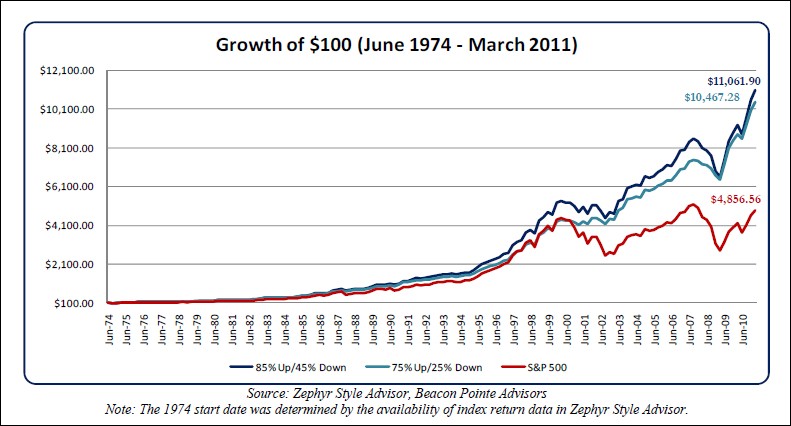Using Capture Ratios to Measure Market Cycles
Post on: 16 Март, 2015 No Comment

More about Gunjan Banati
Director of Risk Management
We believe capture ratios are a particularly good way to measure returns during full market cycles, which include both up markets and down markets.
Gunjan Banati. Fund Research and Analytics, shares her perspective on how capture ratios illustrate fund performance over market cycles.
We think a particularly good way to measure how a fund tackles market cycles is to categorize the performance into up markets and down markets, and the capture ratio is a really good way to do that.
Up capture ratios evaluate the funds performance against the benchmark at times when the benchmark return is positive, while downside capture compares the performance of the fund when periods of the benchmark are negative. One of the great things about looking at up and down capture ratios is when you combine them you can calculate the capture ratio. Thats up-capture divided by down-capture. This shows the net overall relative performance of the fund versus the benchmark.
We think the most effective way to use capture ratios is to evaluate them over longer time periods. We choose to do this because it encompasses multiple market cycles in your analysis. So when we evaluate our funds we calculate capture ratios over three-, five-, and 10-year rolling periods over the last 15 years.
We are often asked by advisors how we use capture ratios. Whats the most effective way to analyze these results?, and capture ratios are a great tool to evaluate whether a fund is more aggressive or more defensive in nature. It can also help you in building portfolios. It helps you more effectively pair funds together, and in addition if you use capture ratios you can make tactical allocations based on your outlook for future market conditions.
So capture ratio is calculated by taking your upside capture and dividing it by downside capture. This gives you the funds net overall relative performance for the period.
Capture ratios may seem complex at first glance but actually theyre really effective tool for you to evaluate your historical investment experience dividing it into up markets and down markets.
The tables below review both current and rolling return periods in order to see how our Featured Funds with 10 or more years of history performed, which includes most of our primarily domestic Featured Funds. We ran each Fund versus its respective primary benchmark, the Russell 2000 Index, except in the case of Royce Micro-Cap Fund, which uses the Russell Microcap Index. Because the index debuted in 2000, ratios for the Royce Micro-Cap Fund only go back to the indexs inception. The tables that follow show aggregate three-, five-, and 10-year quarterly rolling capture ratios.














